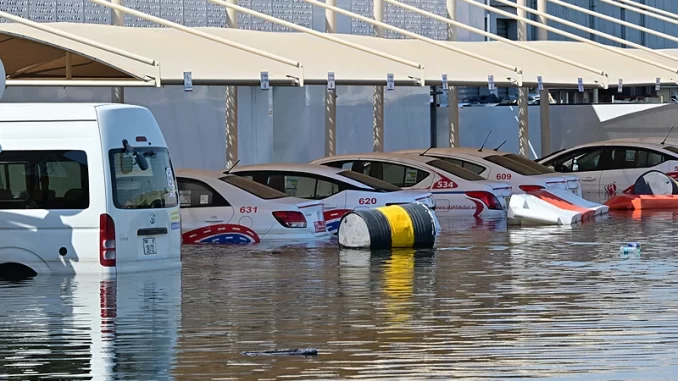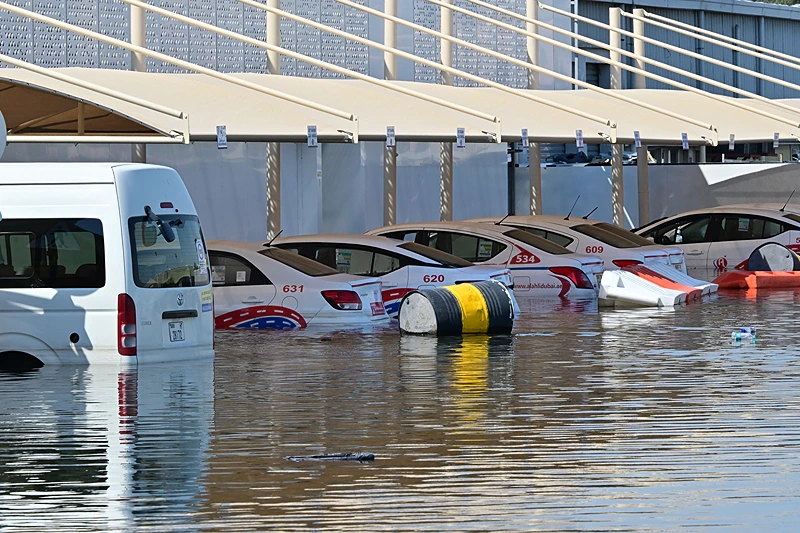

OAN’s Brooke Mallory
2:19 PM – Wednesday, April 17, 2024
This week’s rainfall in the United Arab Emirates and Oman is nearly twice as much as the nation receives in a two-year period. Many have wondered if this is an example of “cloud seeding” gone wrong or climate change.
Advertisement
Desert regions, such as the United Arab Emirates, have arid climates with very limited annual precipitation.
Cloud seeding, a form of geoengineering, is the practice of introducing specific chemicals into the atmosphere to encourage precipitation. It’s one way to ensure that rain falls in these drier climates.
Tennessee was among the first states that have worked to outlaw the practice, even though many have claimed that geoengineering is merely a “conspiracy theory.”
According to Britannica, cloud seeding is the process of injecting clouds with a substance, such as silver iodide, that functions as condensation or ice nuclei in an effort to help induce and augment rainfall or snowfall. The compounds aid in imitating the dust and other minute particles found in nature, which normally act as the catalyst for clouds to condense and release moisture.
There are usually multiple ways to perform the method. In essence, UAE seeding technologies can zap clouds with electricity or employ salt flares to simulate rain. Some employ the airborne application of a substance to facilitate cloud condensation.
Since the 1940s, cloud seeding has been employed to control weather and precipitation, especially during dry spells in the American West, according to Knoxville News.
The Desert Research Institute also reported that cloud seeding projects are currently underway in Nevada and California.
According to the Associated Press, Dubai receives 3.73 inches of rain on average every year. However, a deluge of rain on Tuesday resulted in 5.59 inches of rain.
The United Arab Emirates has previously admitted to being at the forefront of cloud seeding efforts in order to boost precipitation in the region, given its location in one of the warmest and driest areas on Earth. The cloud seeding process “has been an integral part of the UAE’s mission to solve water shortages. Seeding missions were introduced in the 1990s, and more than 1,000 hours of cloud seeding are now performed annually,” CNBC reported.
Although, according to a recent Reuters article, the meteorological agency in the United Arab Emirates still claimed that no cloud seeding operations had taken place before the storm. Additionally, climate scientists stated that “man-made climate change is prompting global temperatures to rise, which is causing extreme weather occurrences” like the storm that produced the heavy rains in the United Arab Emirates, as reported by USA TODAY.
However, other weather researchers and political commentators on a number of social media platforms are adamantly disputing what climate scientists are claiming in regards to Dubai and Oman.
Nevertheless, Omar AlYazeedi, the Deputy Director General of the National Center of Meteorology (NCM), still reiterated that the agency “did not conduct any seeding operations during this event.”
“One of the basic principles of cloud seeding is that you have to target clouds in its early stage before it rains, if you have a severe thunderstorm situation then it is too late to conduct any seeding operation,” he continued.
“We take the safety of our people, pilots and aircraft very seriously… NCM doesn’t conduct cloud seeding operations during extreme weather events,” another NCM spokesperson said.
The New York Times reported that at least 21 people have been reported dead in the UAE and Oman after the record rainfall’s severe flooding.
Stay informed! Receive breaking news blasts directly to your inbox for free. Subscribe here. https://www.oann.com/alerts

